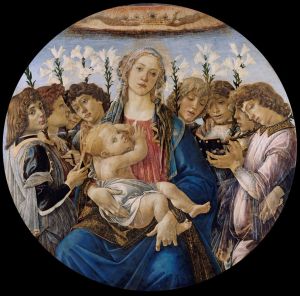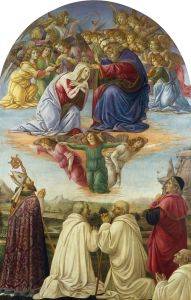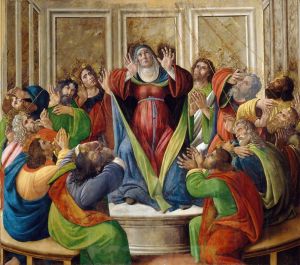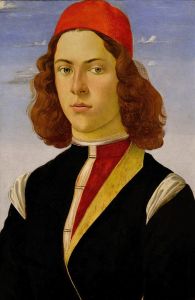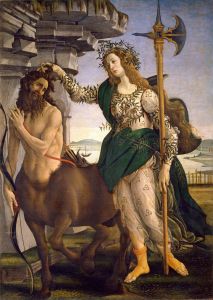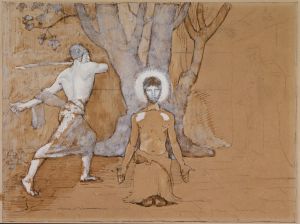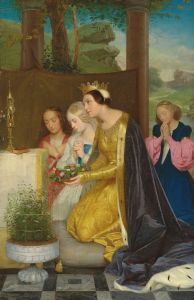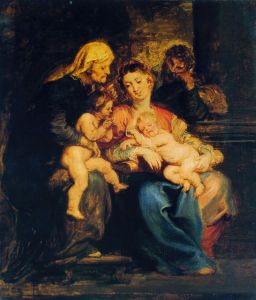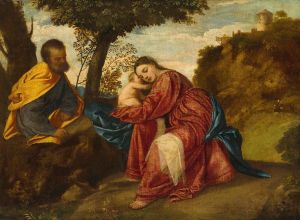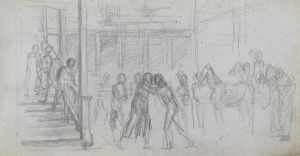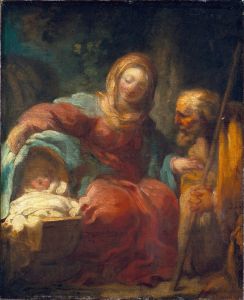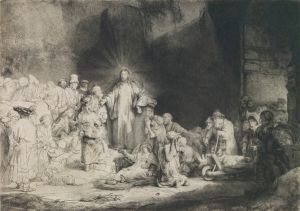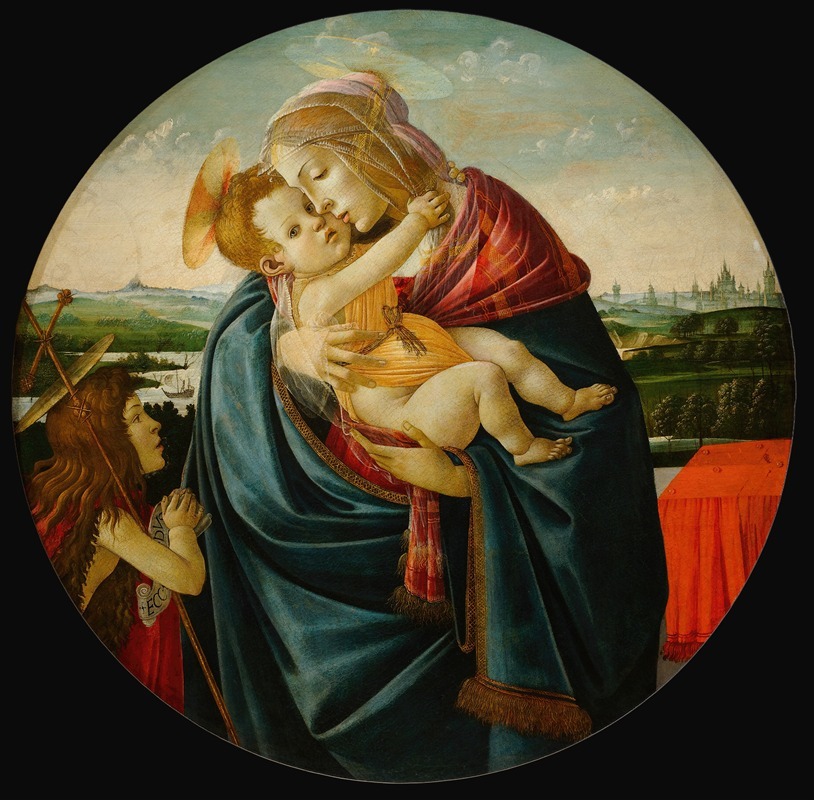
Virgin and Child With Saint John The Baptist
A hand-painted replica of Sandro Botticelli’s masterpiece Virgin and Child With Saint John The Baptist, meticulously crafted by professional artists to capture the true essence of the original. Each piece is created with museum-quality canvas and rare mineral pigments, carefully painted by experienced artists with delicate brushstrokes and rich, layered colors to perfectly recreate the texture of the original artwork. Unlike machine-printed reproductions, this hand-painted version brings the painting to life, infused with the artist’s emotions and skill in every stroke. Whether for personal collection or home decoration, it instantly elevates the artistic atmosphere of any space.
Sandro Botticelli's Virgin and Child with Saint John the Baptist is a painting attributed to the renowned Italian Renaissance artist Sandro Botticelli. Botticelli, whose full name was Alessandro di Mariano di Vanni Filipepi, was active during the late 15th century and is best known for his works such as The Birth of Venus and Primavera. This particular painting reflects Botticelli's characteristic style, which often combined religious themes with delicate, idealized figures and intricate compositions.
The artwork depicts the Virgin Mary holding the Christ Child, with Saint John the Baptist, the patron saint of Florence, positioned nearby. Saint John the Baptist is typically portrayed as a child in such compositions, symbolizing his role as the forerunner of Christ. The figures are arranged in a harmonious and intimate grouping, emphasizing their spiritual connection and the tender relationship between the Virgin and the two children. The painting is notable for its serene and contemplative mood, which is enhanced by Botticelli's use of soft lines and subtle color transitions.
The exact date of creation for Virgin and Child with Saint John the Baptist is not definitively known, but it is generally placed within Botticelli's mature period, likely in the late 15th century. During this time, Botticelli was heavily influenced by the religious and cultural environment of Florence, particularly the teachings of figures like Girolamo Savonarola, whose sermons emphasized piety and devotion.
The painting is executed in tempera on panel, a medium commonly used during the Renaissance period. Botticelli's mastery of this technique is evident in the delicate rendering of the figures and the intricate details of their garments and expressions. The background, as in many of Botticelli's works, is often simplified or symbolic, drawing attention to the central figures and their spiritual significance.
The current location of Virgin and Child with Saint John the Baptist is not definitively established in this context, as Botticelli's works are housed in various collections worldwide, including the Uffizi Gallery in Florence and other major museums. The attribution to Botticelli, as with some of his other works, has been a subject of scholarly discussion, but the painting is widely recognized as being representative of his style and artistic vision.
This artwork exemplifies Botticelli's ability to convey religious themes with grace and emotional depth, making it a significant example of Renaissance art.





